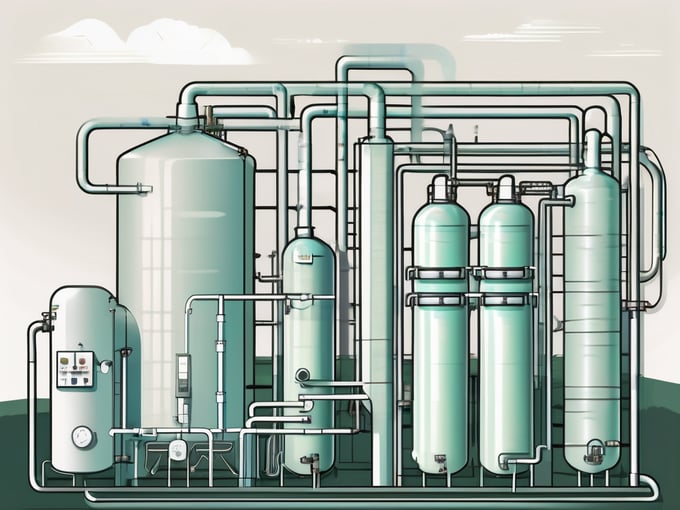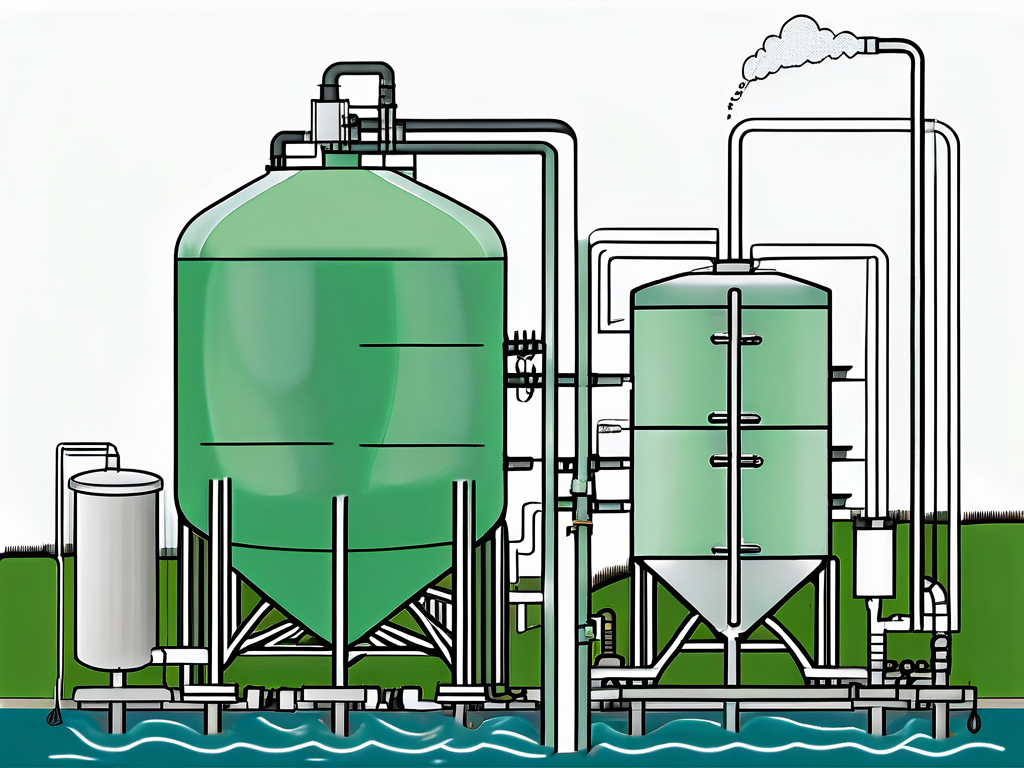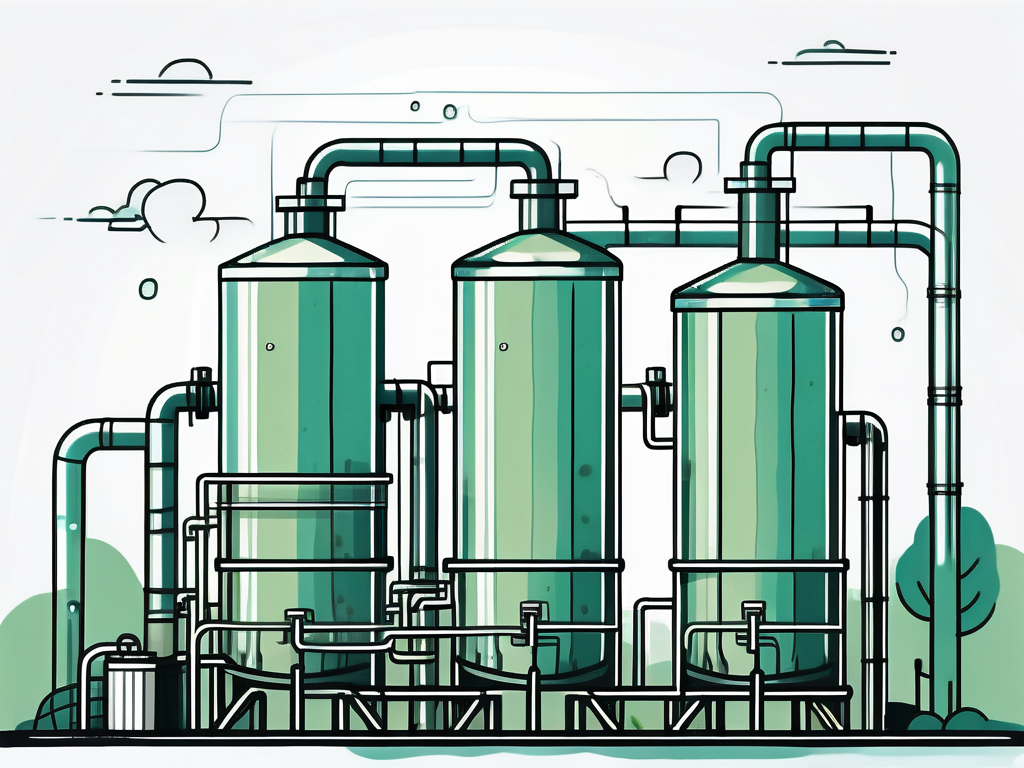
Anaerobic Digestion: Wastewater Treatment Explained
Anaerobic digestion is a complex biological process that involves the breakdown of organic matter in the absence of oxygen. This process is widely used in wastewater treatment facilities to reduce the volume of sludge and produce biogas, a renewable energy source. This article will delve into the intricacies of anaerobic digestion, its role in wastewater treatment, and the various factors that influence its efficiency.
Understanding the science behind anaerobic digestion is crucial for professionals in the wastewater treatment industry. This process not only aids in waste reduction but also contributes to energy production and environmental sustainability. In the following sections, we will explore the various stages of anaerobic digestion, the types of microorganisms involved, and the factors that influence the process.
Stages of Anaerobic Digestion
Anaerobic digestion occurs in four main stages: hydrolysis, acidogenesis, acetogenesis, and methanogenesis. Each stage involves different types of microorganisms and biochemical reactions. Understanding these stages is crucial for optimizing the anaerobic digestion process in wastewater treatment facilities.
It's important to note that these stages do not occur in isolation. They are interconnected, with the products of one stage serving as the substrates for the next. This interdependence underscores the complexity of the anaerobic digestion process and the need for careful monitoring and control.
Hydrolysis
In the hydrolysis stage, complex organic matter such as proteins, fats, and carbohydrates are broken down into simpler compounds by hydrolytic bacteria. This stage is crucial as it prepares the substrates for the subsequent stages of anaerobic digestion.
The efficiency of the hydrolysis stage can be influenced by several factors, including the nature of the organic matter, the pH of the environment, and the temperature. For instance, lipids (fats) are more difficult to hydrolyze than carbohydrates, and the process is more efficient at neutral pH and mesophilic temperatures (around 35°C).
Acidogenesis
During acidogenesis, the products of hydrolysis are further broken down by acidogenic bacteria into volatile fatty acids, alcohols, hydrogen, and carbon dioxide. This stage is characterized by a decrease in pH due to the production of organic acids.
Acidogenesis is a critical stage in the anaerobic digestion process as it sets the stage for the production of biogas in the subsequent stages. However, it can also lead to process instability if the production of acids exceeds their consumption, resulting in a drop in pH that can inhibit the activity of the methanogenic bacteria.
Microorganisms in Anaerobic Digestion
The anaerobic digestion process is mediated by a diverse community of microorganisms, each playing a specific role in the breakdown of organic matter. These microorganisms work in synergy, with the products of one group serving as the substrates for another.
Understanding the diversity and function of these microorganisms is crucial for optimizing the anaerobic digestion process. Changes in the microbial community can have significant impacts on the efficiency of the process and the quality of the end products.
Hydrolytic and Acidogenic Bacteria
Hydrolytic and acidogenic bacteria are the primary players in the initial stages of anaerobic digestion. These bacteria are responsible for the breakdown of complex organic matter into simpler compounds that can be utilized by the subsequent groups of microorganisms.
These bacteria are generally tolerant to a wide range of environmental conditions, including variations in pH and temperature. However, their activity can be inhibited by high concentrations of ammonia and other toxic compounds that may be present in the wastewater.
Methanogenic Archaea
Methanogenic archaea are the key players in the final stage of anaerobic digestion, methanogenesis. These microorganisms convert the products of the previous stages into methane, the primary component of biogas.
Methanogens are more sensitive to environmental conditions than the bacteria involved in the initial stages of anaerobic digestion. They prefer neutral to slightly alkaline pH and are inhibited by high concentrations of ammonia and other toxic compounds. Understanding the requirements of these microorganisms is crucial for maintaining process stability and maximizing biogas production.
Factors Influencing Anaerobic Digestion
Several factors can influence the efficiency of the anaerobic digestion process. These include the nature of the organic matter, the environmental conditions, and the composition of the microbial community. Understanding these factors can help in optimizing the process and maximizing the production of biogas.
It's important to note that these factors are interconnected. Changes in one factor can have ripple effects on the others, underscoring the need for a holistic approach in managing the anaerobic digestion process.
Nature of the Organic Matter
The nature of the organic matter in the wastewater can significantly influence the efficiency of the anaerobic digestion process. Complex organic matter such as proteins and lipids are more difficult to break down than simple carbohydrates, and their presence can slow down the process.
Furthermore, the presence of toxic compounds such as heavy metals and xenobiotics can inhibit the activity of the microorganisms involved in the process. Therefore, pre-treatment of the wastewater to remove these compounds may be necessary to ensure efficient anaerobic digestion.
Environmental Conditions
The environmental conditions in the digester, including the temperature, pH, and the concentration of nutrients, can significantly influence the activity of the microorganisms and the efficiency of the anaerobic digestion process.
For instance, methanogens prefer neutral to slightly alkaline pH and are inhibited by high concentrations of ammonia. Therefore, maintaining the right environmental conditions is crucial for ensuring process stability and maximizing biogas production.
Role of Anaerobic Digestion in Wastewater Treatment
Anaerobic digestion plays a crucial role in wastewater treatment. It aids in the reduction of sludge volume, the production of biogas, and the removal of pathogens and other harmful substances from the wastewater.

By understanding the intricacies of the anaerobic digestion process, wastewater treatment professionals can optimize the process to achieve these benefits and contribute to environmental sustainability.
Sludge Volume Reduction
One of the primary benefits of anaerobic digestion in wastewater treatment is the reduction of sludge volume. By breaking down the organic matter in the sludge, anaerobic digestion reduces the amount of solid waste that needs to be disposed of, thereby reducing disposal costs and environmental impact.
Furthermore, the digestion process also improves the dewaterability of the sludge, making it easier to handle and dispose of. This can further reduce the costs associated with sludge management.
Biogas Production
Another significant benefit of anaerobic digestion is the production of biogas, a renewable energy source. Biogas consists mainly of methane and carbon dioxide and can be used to generate heat and electricity, thereby offsetting the energy costs of the wastewater treatment facility.
By maximizing the production of biogas, wastewater treatment facilities can become energy self-sufficient and contribute to the reduction of greenhouse gas emissions.
Pathogen and Pollutant Removal
Anaerobic digestion also contributes to the removal of pathogens and other harmful substances from the wastewater. The high temperatures and the activity of the microorganisms in the digester can kill pathogens, thereby reducing the risk of disease transmission.
Furthermore, the digestion process can also remove pollutants such as heavy metals and xenobiotics, improving the quality of the treated wastewater and reducing its environmental impact.
Conclusion
Anaerobic digestion is a complex but crucial process in wastewater treatment. By understanding the science behind this process, wastewater treatment professionals can optimize its efficiency, maximize the production of biogas, and contribute to environmental sustainability.

While this article provides a comprehensive overview of the anaerobic digestion process, it's important to remember that each wastewater treatment facility is unique, and the process may need to be tailored to the specific conditions and requirements of the facility.



